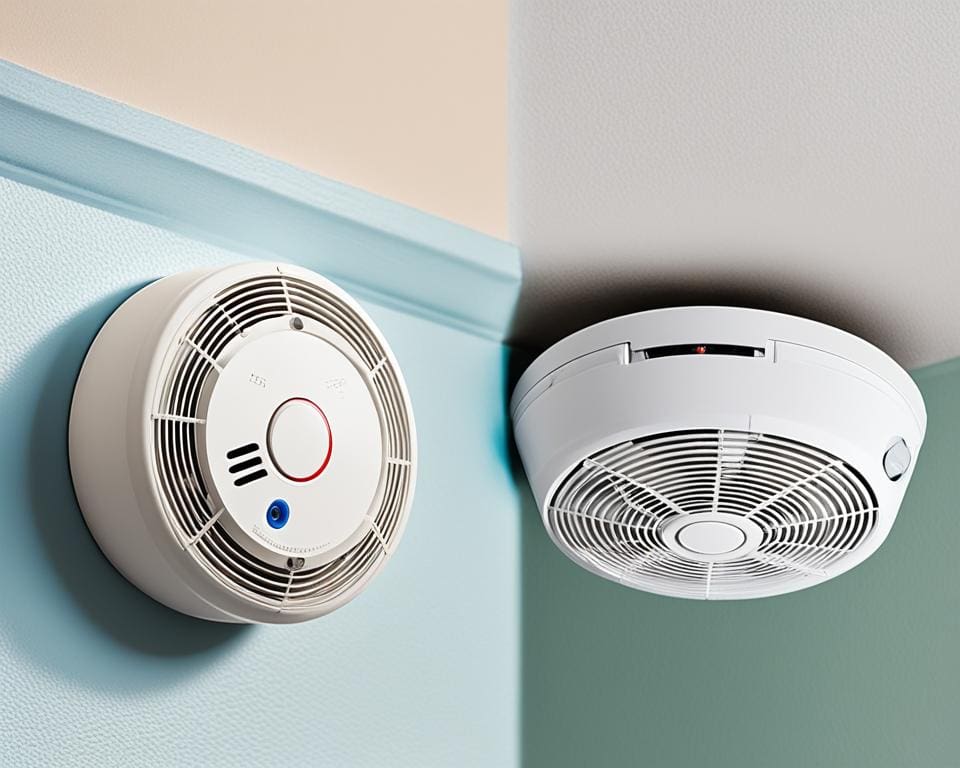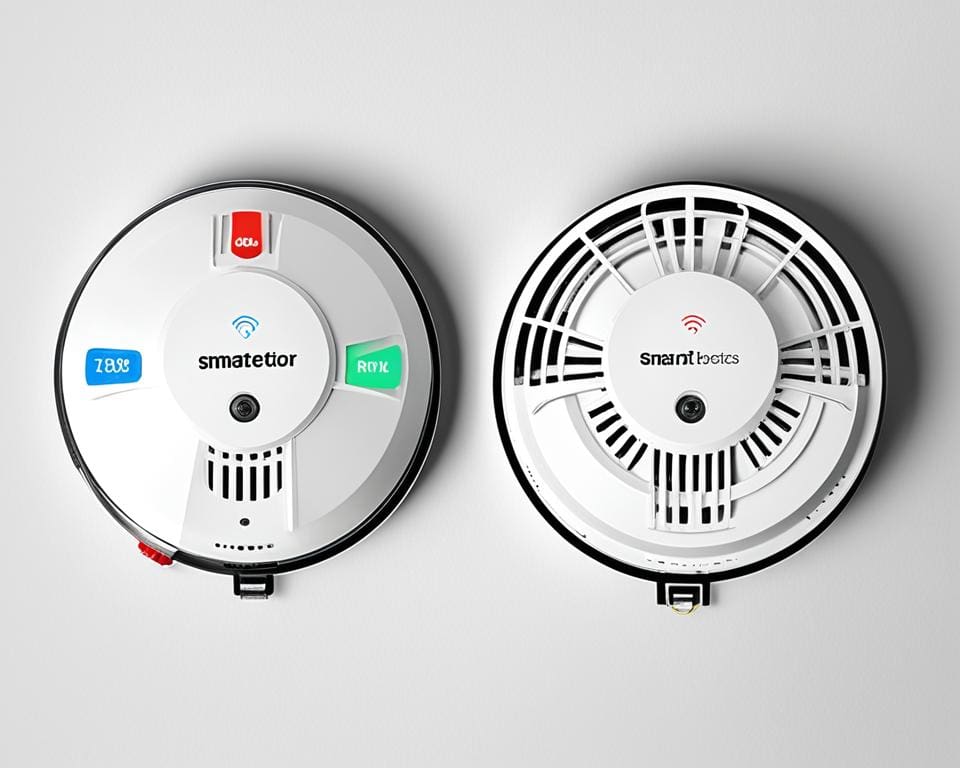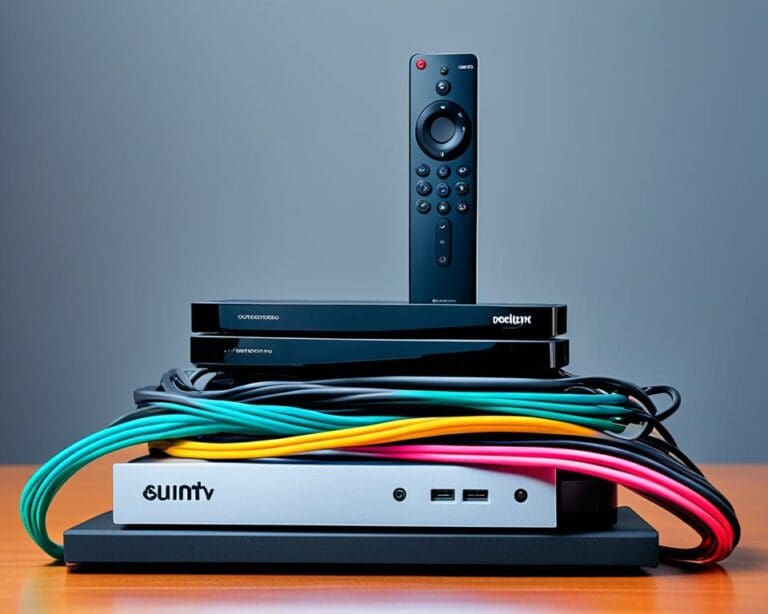Smoke detectors are key in keeping our homes safe. More than a third of home fires happen where there’s no smoke alarm. Having a working alarm can cut the risk of dying in a fire by half. It’s important to know the difference between smart and traditional smoke detectors. Traditional ones have been around for a while. But smart alarms add new features like checking themselves and working with other smart devices. This makes home safety even better.
This article will compare different smoke detectors. It considers how reliable they are, how much they cost, and what new features they have. When picking a smoke detector, think about both ionization and photoelectric types. The US Fire Administration says homes should have both for the best protection. Installing smoke detectors rightly and checking them often can really save lives. This is especially true for fires that start late at night.
Understanding Smoke Detectors and Their Importance
Smoke detectors are key in keeping us safe from fires. They cut the risk of dying in a fire by almost half. It’s vital to check these devices regularly to make sure they work. Sadly, 30% of deaths from fires happen in places without working alarms. Putting smoke detectors in crucial spots, like bedrooms and hallways, is essential for safety.
The Role of Smoke Detectors in Fire Safety
Smoke detectors are a homeowner’s first defense against fires. They give early warnings, which can save lives. These alarms give families time to escape a dangerous situation. Having various types of smoke detectors at home can offer the best protection against different fire types.
Types of Smoke Detectors: Overview
Let’s look at the different smoke detectors:
- Ionization smoke alarms quickly sense fast-spreading fires.
- Photoelectric smoke alarms are best at detecting slow-burning, smoky fires.
- Dual-sensor smoke detectors combine both methods for wider protection.
Other options include hardwired alarms, which work without batteries but might not work if the power goes out. Alarms with battery backups are reliable during power failures. Smart detectors offer extra features like phone alerts, wireless linking, and automatic calls to fire services.

Interconnected alarms are especially good for big homes since they go off together, warning everyone inside. It’s a good idea to check smoke detectors and carbon monoxide alarms monthly. Batteries should be changed every one to two years. Following state laws on how many detectors to have ensures safety and compliance.
Smoke Detectors: Smart vs. Traditional
When choosing how to protect your family and property from fires, deciding between smart and traditional smoke detectors is key. Each type has its features, benefits, and downsides. This makes the choice a significant one.
Pros and Cons of Smart Smoke Detectors
Smart smoke detectors offer benefits that boost fire safety in homes. Advantages of smart smoke alarms include:
- Remote monitoring through smartphone alerts, which is reassuring when you’re not at home.
- Interconnectivity with other safety devices to activate all alarms together.
- Voice alerts that tell you the danger type, like smoke or carbon monoxide.
- Some models, like Google Nest Protect and First Alert OneLink, test themselves and alert for hazards or maintenance.
However, smart alarms have some drawbacks like:
- They are more expensive, with prices ranging from $40 to over $150.
- A need for Wi-Fi, which might fail due to weak signals or outages.
- A lifespan of about ten years, requiring them to be replaced more often.
- Some older homes might need updates in their electrical wiring to use smart models.
Traditional Smoke Detectors: What to Know
Traditional smoke detectors are dependable and easy on the wallet. Standard smoke alarms beep loudly when they detect smoke. It’s important to know how reliable they are:
- They are cost-effective, making them a good choice for most homeowners.
- Simple to use, reducing mistakes during setup and upkeep.
- They work well even in homes that have some smart technology.
It’s key to keep up with maintenance for traditional smoke detectors:
- Checking batteries regularly ensures they work right.
- They should be replaced every ten years to keep detecting smoke accurately.
Traditional alarms may lack smart features, but their proven reliability in fire safety is invaluable. The National Fire Protection Association (NFPA) highlights the need for working smoke alarms in every bedroom and each level of the home. This helps lower the risks that come with house fires.
Choosing the Right Smoke Detector for Your Home
Choosing the right smoke detector is crucial for every homeowner. Consider your living situation and needs. Think about your home’s size, where to place alarms, and your budget.
Home fire safety is a priority. It’s important to choose a detector that fits your home. You might pick a smart alarm or a traditional one.
Smart smoke alarms, like the Nest Protect, have features that stand out. They send alerts to your phone, tell you when the battery is low, and check themselves. They fix common problems seen in older models, like false alarms. Plus, they can connect to your home network for extra safety. They are among the top choices for a home.
But, if you’re watching your budget, there are options like the Kidde Hardwired Smoke Alarm. This alarm is less expensive but still offers smart features. No matter what you pick, install it as the NFPA recommends. Put alarms in and outside sleeping areas and on all levels.
Buying the right smoke detector is more than just following rules. It’s about keeping you and your family safe from fires.









